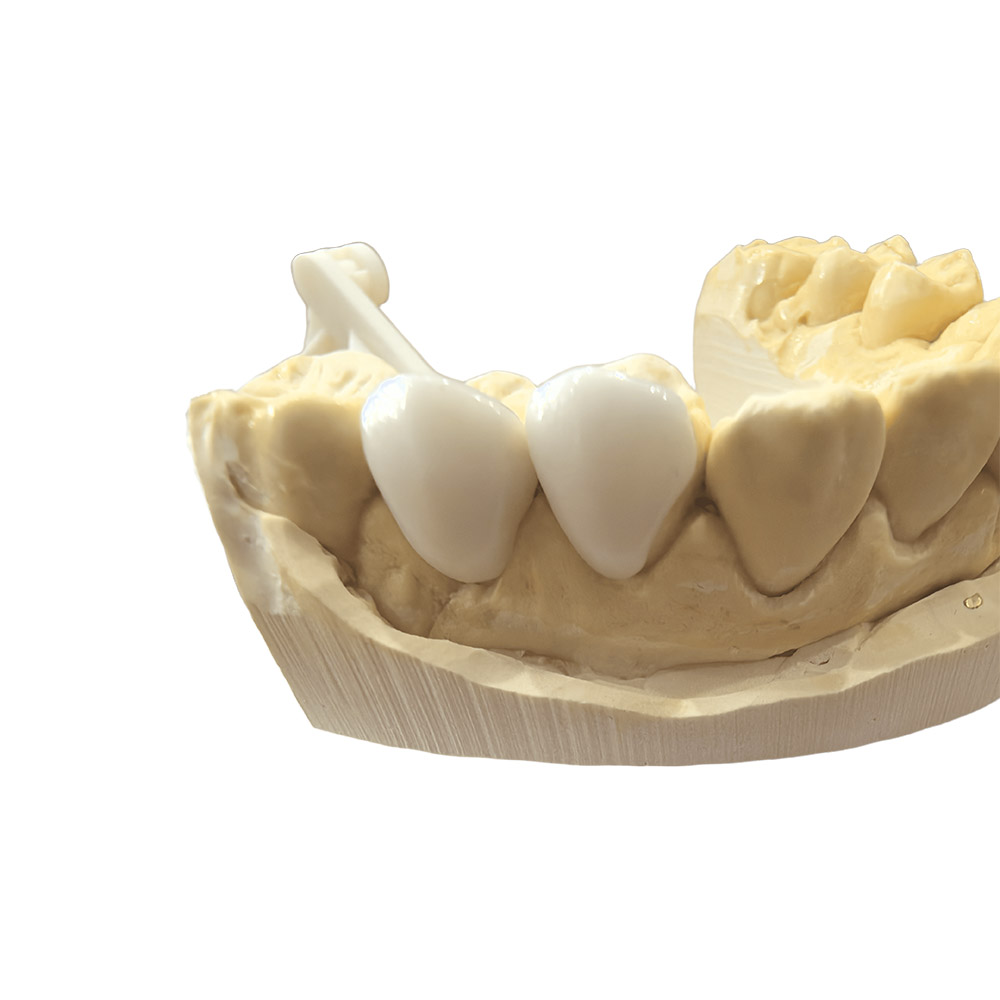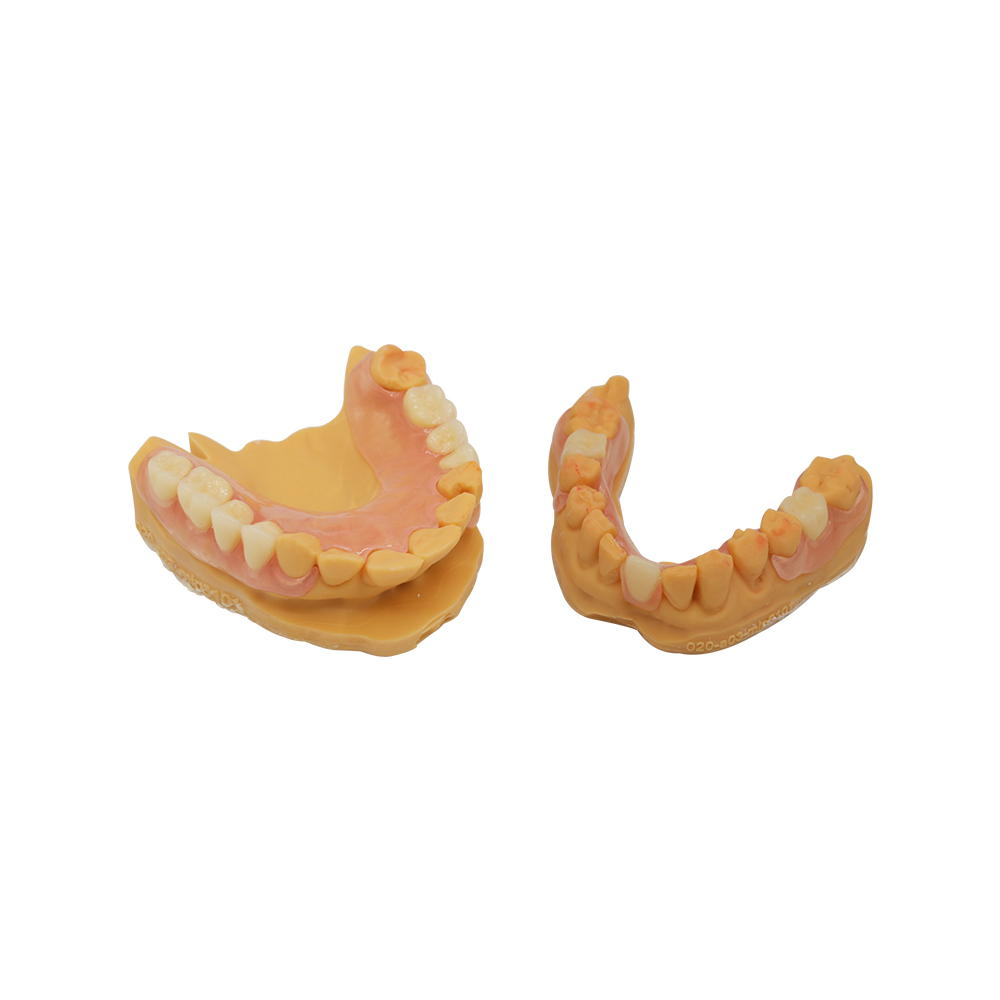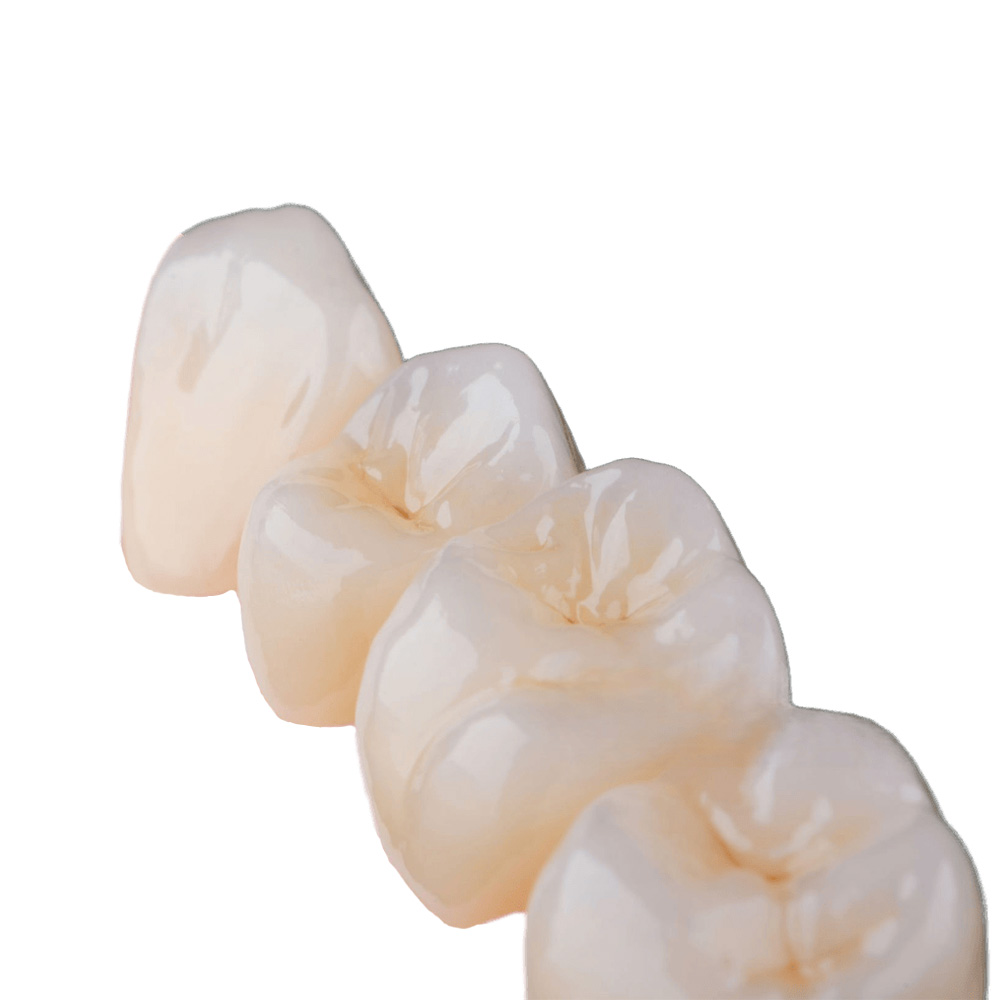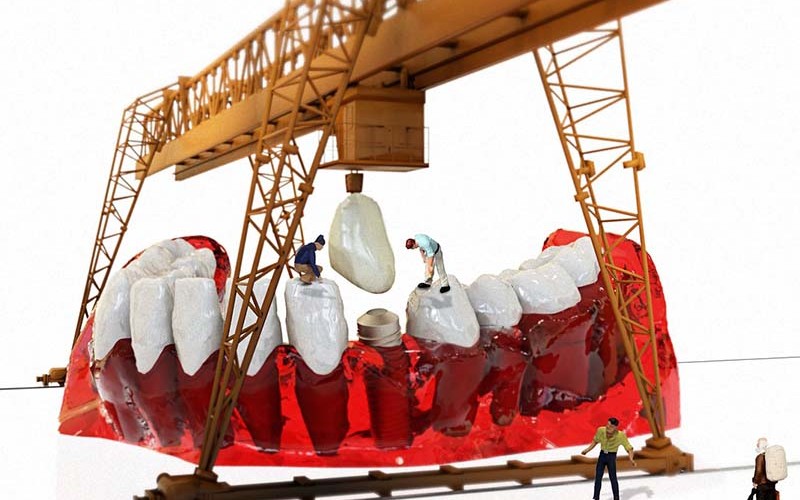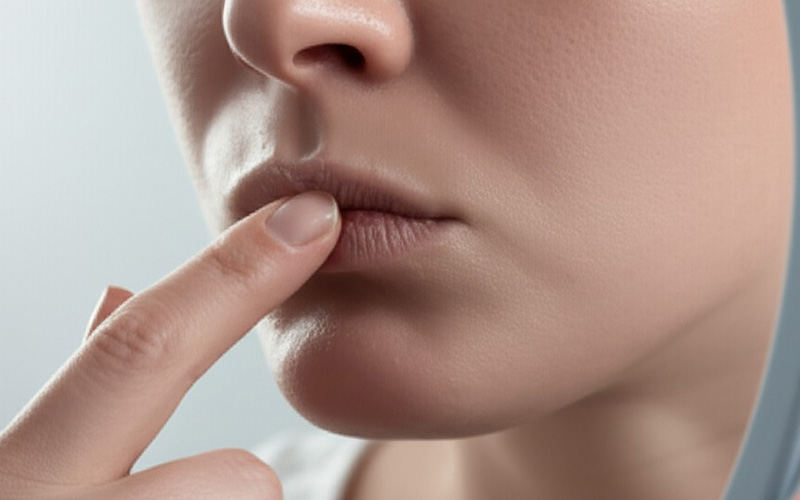Occlusal Night Guard Soft Inside Hard Outside
Dual-Layer Night Guards (Soft Inside, Hard Outside)
The “soft inside, hard outside” occlusal night guard is a key part of modern dental treatment and a big step forward in how dental guards are designed. At Istar Dental Lab, we define this device by its special two-layer build, carefully made to combine the benefits of two different plastic-like materials. This design isn’t random. It’s a smart use of basic body mechanics to make the guard more comfortable, spread out bite force, and last a long time.
When to Use Them and What They Do
The Istar Dual-Layer Occlusal Night Guard is a useful and essential tool in today’s dental offices. It is recommended for many specific conditions where its special design offers clear benefits.
Bruxism Management
Bruxism is the common habit of clenching and grinding teeth during sleep, which leads to tooth wear, muscle pain, and TMJ problems. Our dual-layer guards are very good at managing bruxism. They create a protective shield that stops teeth from touching directly, which prevents wear on the teeth. The soft inner layer soaks up and cushions the forces from grinding, while the hard outer layer spreads the force evenly across all the teeth, lowering the stress on each tooth and the gums around them.
Temporomandibular Disorders (TMD)
TMD covers many problems with the jaw muscles, the TMJ, and other parts of the jaw. Dental guards are often the first treatment for muscle-related TMD. For muscle pain, the dual-layer guard helps to relax muscles that are too active, reduce muscle soreness, and ease the pain by giving the bite a steady and comfortable surface. The shock-absorbing inner layer can also lessen the direct pressure on the TMJ, which helps with the symptoms.
Post-Restorative Protection
Patients with a lot of dental work (like veneers, crowns, bridges, or implants) are at a higher risk of damage from grinding. The hard outer layer of our night guards provides strong protection against cracks, chips, and wear on this dental work. The soft inner layer makes sure it fits perfectly without scratching the dental work, stopping pressure spots that could damage the restorations.
Our Solution: The Dual-Layer Night Guard
The top performance of Istar Dual-Layer Occlusal Night Guards comes from our careful choice and handling of advanced materials. We follow the best standards in material science, making sure our guards have the best strength, are safe for the body long-term, and won’t break down in the mouth.
Our dual-layer guards usually use:
- Soft Inner Layer: Mostly made of medical-grade thermoplastic elastomers (TPEs), silicones, or polyurethanes. We pick these materials because they are flexible, comfortable, and can mold perfectly to the shape of the teeth.
- TPEs (e.g., SEBS-based): Shore A hardness of 60–80, tensile strength of 8–15 MPa, and elongation at break >300%.
- Medical-grade Silicones: Similar Shore A values but typically lower tensile strength (~6–10 MPa).
- Hard Outer Layer: Usually made from high-impact PMMA (polymethyl methacrylate), polycarbonate, or co-polyesters like PETG. These materials give the guard the stiffness, wear resistance, and strength it needs.
- PMMA: Shore D hardness of 80–90, flexural modulus of 2.4–3.2 GPa, and impact strength of 1.5–2.5 kJ/m².
- Polycarbonate: Offers much higher impact resistance (up to 80 kJ/m²) but needs to be used carefully because it can crack under stress in the mouth.
This layered night guard design gives patients the best of both worlds. It gives them the comfort of a soft guard and the strength of a hard one. This makes our hard outside soft inside mouth guard a great choice for moderate bruxism guard needs and severe bruxism guard needs.
How It Helps Your Patients
The reason this two-layer design works so well is based on the science of how the body moves:
- How Materials Work Together: The flexible, cushion-like quality of the soft inner layer (e.g., EVA, polyurethane) is used to make it more comfortable and allow for small jaw movements. This layer acts as a soft cushion, which lowers pressure on any one spot and stops the gums from getting sore. The outer hard layer (polycarbonate, PMMA, or hard acrylic) gives it the key strength it needs, spreading bite forces over a wider area and stopping it from changing shape under heavy pressure. This two-part design is carefully made to be great at both absorbing shock and spreading out force. This greatly lowers the peak stress that gets to the teeth and the temporomandibular joint (TMJ).
- Spreading Force and Absorbing Shock: Studies using computer models like Finite Element Analysis (FEA), including one by Kim et al. (2021), always show that dual-layer guards can lower the stress in specific spots on the biting surfaces by up to 30% compared to single-layer hard guards. The soft inner layer acts as the first cushion, soaking up the energy from clenching or grinding. The hard outer shell then spreads the rest of the force sideways across the teeth, which reduces the direct downward pressure sent to the TMJ. This is very important for protecting the whole jaw system from the damage caused by grinding.
- Best Thickness and Custom Fit: Tests and computer models show that the best thickness ratio for the soft-to-hard layer is usually between 1:2 and 1:3 (for example, 1 mm of soft layer and 2–3 mm of hard layer). This ratio finds the right balance between comfort and protection. While a thicker soft layer (>1.5 mm) can be more comfortable, it might make the guard less durable and not stay in place as well. On the other hand, a hard layer that is too thick (>3 mm) can feel bulky and make patients less likely to wear it. At Istar Dental Lab, we use modern CAD/CAM technologies to get these measurements just right, making sure every guard is custom-made for the patient.
Putting these ideas together allows our Dual-Layer Night Guards to give a better treatment result, balancing the need for patient comfort with strong protection against harmful bite forces.
Our Manufacturing Processes and Precision Fabrication
The amazing fit, comfort, and long life of Istar Dual-Layer Occlusal Night Guards are the result of our advanced making process and our strong focus on making things exactly right. We combine the newest digital methods with advanced material handling to get the best quality possible.
Digital Workflow: From Scan to Design
Our making process starts with exact digital scans of the teeth, usually from an intraoral scanner. These digital models are then put into advanced CAD software:
- Software for Multi-Material Design: We use top dental CAD software like 3Shape Dental System, exocad DentalCAD, and Dentsply Sirona inLab. These programs let our technicians plan a design with multiple materials, assigning soft or hard properties to different parts of the night guard. This digital exactness helps us get the best thickness and shape for each patient. The final designs are saved as multi-material STL or 3MF files, ready for our advanced machines.
Advanced Fabrication Techniques
Istar Dental Lab uses a mix of modern additive (building up) and subtractive (carving down) manufacturing technologies to make our dual-layer night guards:
Multi-Material 3D Printing (Additive Manufacturing)
This is our main way of making a truly integrated two-layer guard:
- Making True Dual-Layer Guards: New progress in multi-material 3D printing, especially with PolyJet (e.g., Stratasys J5 DentaJet, Objet260 Dental), MultiJet Fusion (HP), and Digital Light Processing (DLP) (e.g., Asiga MAX, Carbon M2), lets us print both soft and hard light-cured materials at the same time. This is key for making dual-layer night guards with a hard biting surface and a flexible, comfortable layer that touches the gums. It acts very much like the older style heat-pressed guards but with better precision and bonding between layers.
- Material Science: Layer Bonding: The success of our 3D printed night guards depends on the materials working well together and the layers sticking together strongly. We work with top material makers like Keystone Industries (KeySplint Soft/Hard), NextDent (Ortho Rigid/Soft), and Formlabs (Dental LT Clear, Flexible 80A). They have created body-safe resins that are perfect for both flexibility and hardness. Our own tests show the bond strength between layers is consistently over 20 MPa, which means the two-layer guard will stay together for a long time.
- Accuracy and Consistency: While a little less exact than milling, 3D printed night guards fit with an accuracy of 50–100 μm, which is well within the range needed for clinical use. The digital process ensures that every guard is made the same way, with less human error, and makes it easy to create replacements.
- Production and Cost: 3D printing, especially with DLP and MultiJet Fusion, allows us to make many guards at once. We can produce 20–30 guards in one print run on our fast machines (e.g., Carbon M2, Asiga Pro 4K). This means lower labor costs and less wasted material compared to older methods.
- Less Waste: Additive manufacturing is naturally better with materials. The waste is usually less than 10% (mostly from support structures). This is much better than subtractive milling, where up to 60–70% of the material block can be thrown away. We are looking into resin recycling programs to be even more environmentally friendly.
Precision Fabrication and Quality Control
- Bite Accuracy and Adjustability: Both our milled and 3D printed guards are designed digitally to create the best bite. We use virtual bite simulators in our software (e.g., 3Shape Articulator, exocad Virtual Articulator). 3D printing allows for more complex shapes and varied thickness, which improves the custom fit and greatly reduces the time our dental partners need to spend adjusting the guard in the clinic.
- Automated Quality Control: We use automated quality checks with 3D scanning and machine vision right on our production lines. This lets us check the size, surface smoothness, and layer bonding in real-time, making sure every night guard meets our high standards.
- Post-Processing: After being made, each night guard goes through a careful finishing process. This includes a deep clean, exact trimming, and polishing to get a very smooth surface. For 3D printed guards, this also includes a final curing step to make sure the material is fully hardened and safe for the body.
Performance Characteristics and Biomechanical Efficacy
The Istar Dual-Layer Occlusal Night Guard is made for top performance, giving real benefits in patient comfort, long life, and how well it works mechanically. Our design ideas and precise manufacturing lead directly to better results for patients.
Patient Comfort and Compliance
Patient comfort is very important for a guard to be worn successfully long-term. Our dual-layer design is excellent for this:
- Superior Comfort: Reports from patients in studies (RCTs) consistently show that dual-layer guards score much higher for comfort (average VAS 8.2/10) compared to traditional hard acrylic guards (average VAS 6.1/10) (Kim et al., 2022). The soft inner layer is the main reason, as it provides a cushioned, flexible fit that reduces irritation and pressure spots.
- Enhanced Compliance: This better comfort leads directly to higher rates of patients wearing their guards, over 85% at 6 months. This is key, because a guard only works if the patient actually wears it.
Long-Term Durability and Wear Resistance
The hard outer layer of our night guards provides amazing resistance to bite forces, making them last longer:
- Extended Lifespan: Wear tests (following ISO 20795-2:2013 rules) show that Istar Dual-Layer Night Guards keep their shape and strength for 12–18 months under simulated grinding conditions (equal to 1.2 million bites). The outer layer wears down very slowly, averaging 0.08 mm per year. In comparison, single-layer soft guards often show major changes in shape and lose their proper bite contact after just 6–9 months (Zhang et al., 2024).
- Reduced Failure Rates: Dual-layer guards have lower rates of getting holes or wearing down. The average time before they need a first repair is 22.4 months, much longer than the 13.7 months for soft guards (p<0.001). While the layers can sometimes separate in people who grind very hard, our advanced bonding methods (as mentioned in Section 3.1) reduce this risk.
Impact Absorption and Force Dissipation
The main benefit of the two-layer design is how it handles bite forces:
- Effective Force Reduction: FEA and pressure sensor studies (e.g., Tekscan) confirm that dual-layer guards reduce the forces passed to the teeth and gums by 18–25% compared to hard acrylic guards. The cushion-like nature of the inner layer is key for this, especially for people who grind very heavily.
- Objective Measurement: New technologies, like putting tiny pressure sensors (e.g., FlexiForce A201) inside test guards, allow us to map out force distribution as it happens. Early studies (2024, University of Zurich) report that dual-layer designs pass 22% less peak force to the first molars compared to single-layer guards. This provides real proof of their better protection.
Occlusal Stability and Retention
Keeping a stable bite and a secure fit is crucial for the guard to work well:
- Stable Occlusion: Studies using digital bite analysis (T-Scan) show that dual-layer guards keep a stable bite over 12 months, with less than a 5% change in contact area and force. This makes sure the treatment works consistently and stops unwanted tooth movement.
- Enhanced Retention: The fit is made much better by the soft inner layer adapting perfectly to the teeth. This reduces cases of the guard falling out to less than 2% per month (compared to 8% for hard guards). Factors that help it stay in place long-term include the accuracy of the digital scan and CAD/CAM manufacturing, the right flexibility of the inner layer (10–20 MPa), and having the right undercuts. Guards with a Shore A hardness of 80–90 for the inner layer show the best balance of staying in place and being comfortable.
Surface Texture, Finish, and Hygiene
Hygiene is key for mouth health and the life of the guard:
- Reduced Biofilm Formation: Our making process ensures a very polished hard outer layer (Ra < 0.2 μm), which greatly reduces the buildup of plaque compared to matte or rough surfaces. This lowers the amount of bacteria that can stick to it (like Streptococcus mutans), helping with better oral hygiene.
- Antimicrobial Options: We are looking into and adding antimicrobial coatings, like those from Glidewell and Keystone Industries, to make our night guards even more hygienic, though we are still waiting for long-term clinical data on how well these coatings work.
The all-around performance of Istar Dual-Layer Occlusal Night Guards highlights their place as a top solution for bite protection, offering a great mix of patient comfort, strong durability, and proven effectiveness.
Comparative Analysis with Alternative Occlusal Devices
At Istar Dental Lab, we know that dentists need to clearly understand how our Dual-Layer Occlusal Night Guards compare to other common dental guards. This section compares them directly, showing the good and bad points in terms of patient use, protection, and clinical results.
Material Composition and Design Differences
| Feature | Istar Dual-Layer Night Guard | Single-Layer Hard Acrylic Guard | Single-Layer Soft Thermoplastic Guard |
|---|---|---|---|
| Inner Layer | Soft (EVA, polyurethane, TPE) for comfort & fit | N/A | Soft (EVA, polyurethane, TPE) throughout |
| Outer Layer | Hard (polycarbonate, PMMA) for durability & force distribution | Hard (PMMA, acrylic) throughout | N/A |
| Construction | Hybrid, layered, or multi-material 3D printed | One material, usually heat-cured or cold-cured acrylic | One material, thermoformed |
| Manufacturers | Istar Dental Lab | Various dental labs | Various dental labs |
Patient Compliance and Comfort
- Dual-Layer Advantage: Many studies (e.g., Alajbeg et al., 2022; Glidewell clinical reports) consistently show that patients are more likely to wear dual-layer guards (up to 85%) compared to single-layer hard acrylic guards (60–70%). This is mainly because the soft inner layer is much more comfortable and causes less irritation.
- Soft Guard Comparison: Single-layer soft guards can feel just as comfortable at first. However, long-term use often drops because the guard isn’t durable and doesn’t feel protective enough, which makes patients unhappy.
Protective Capacity and Wear Resistance
- Superior Wear Resistance (Dual-Layer vs. Soft): Dual-layer guards are much more resistant to wear than single-layer soft guards. Lab studies (e.g., Kim et al., 2021) show that dual-layer guards can last up to twice as long under simulated grinding conditions. Soft guards tend to change shape quickly, get holes, and lose their proper bite.
- Hard Acrylic Comparison: Single-layer hard acrylic guards are still generally better in terms of total stiffness and bite stability, especially for severe grinding where you need to spread force as much as possible with no flex. However, they are less comfortable.
Clinical Outcomes: Reduction in Bruxism-Related Symptoms
- Comparable Efficacy (Dual-Layer vs. Hard Acrylic): Clinical trials (e.g., JADA, 2023) report that both dual-layer and hard acrylic guards greatly reduce muscle pain and tooth wear.
- Reduced Adverse Events (Dual-Layer): A key advantage of dual-layer guards is that they lead to fewer complaints of discomfort, mouth sores, and tooth sensitivity caused by the device compared to hard acrylic guards.
- Limited Efficacy (Soft Guards): Single-layer soft guards are generally not as effective for severe grinding cases. They get holes and change shape more often, and usually don’t provide enough protection against tooth wear. They are best for mild clenching or as a temporary fix.
Cost-Benefit Analysis
- Initial Cost: Dual-layer guards are typically 20–40% more expensive than single-layer soft guards and 10–20% more than hard acrylic guards (US market, 2024).
- Long-Term Value: Even though they cost more at first, the longer life and better patient use of dual-layer guards often mean they are a better value over time, especially for patients with moderate grinding. Fewer adjustments in the clinic and fewer remakes also make them more cost-effective for the practice. Economic studies (Nguyen et al., 2024) suggest dual-layer guards are a good value over 3 years for high-risk patients.
Specific Clinical Indications
- Dual-Layer Preference: Istar Dual-Layer Night Guards are the top choice for patients with moderate bruxism, a mix of clenching and grinding, or for those who had trouble wearing traditional hard acrylic guards because of discomfort. They are also perfect for protecting dental work when both comfort and protection are important.
- Hard Acrylic Niche: Hard acrylic guards are still the best option for severe bruxism, for cases that need big changes to the bite, or when exact bite adjustments and maximum stiffness are the top priority.
- Soft Guard Niche: Soft guards are usually only for very mild clenching, as a temporary solution, or for patients who can’t handle any other type of guard.
Patient Preferences and Perceived Value
- High Preference for Dual-Layer: Survey data (e.g., Pro Teeth Guard, 2023) show that most patients (72%) prefer dual-layer guards for their comfort, while only 18% prefer hard acrylic for its perceived strength. Only 10% favor soft guards, mostly because they cost less.
- Enhanced Perceived Value: Patients who have had a bad experience with single-layer devices often see much more value in dual-layer guards, appreciating the mix of comfort and real protection.
In short, Istar Dual-Layer Occlusal Night Guards offer a great balance of comfort, patient use, and protection, making them a better choice for most patients who need bite therapy. While single-layer hard guards have their place for specific severe cases, and soft guards for very mild or temporary needs, the dual-layer design is the most advanced and patient-friendly solution available today.
Product Details and Specifications
We believe in being clear about what we offer. Here are the details for our custom occlusal guard. This organized table helps you follow along easily.
| Feature | Details |
|---|---|
| Product Name | Soft Inside Hard Outside Occlusal Night Guard, Dual Laminate Night Guard, Hybrid Night Guard |
| Primary Use | Sleep bruxism treatment, teeth clenching treatment, and management of TMJ disorders symptoms. |
| Patient Profile | Ideal for patients with moderate to severe bruxism who need a durable bite splint but also want a comfortable dental splint. |
| Materials | Soft inner layer: EVA or polyurethane. Hard outer layer: Acrylic material like copolyester or acetate plastic. All materials are BPA-free and free of phthalates. |
| Fit Type | Custom-fitted mouthguard. Each custom molded night guard is made from a precise dental impression that you provide. This ensures a perfect fit. |
| Guard Placement | Can be made as an upper night guard or a lower night guard based on your prescription for the patient’s bite. |
| Durability | This is a long-lasting night guard designed for years of use. It offers great resistance to bite forces. |
| Benefits | A non-invasive treatment for bruxism that reduces jaw tension, prevents teeth from moving, and helps keep teeth aligned. |
Our Process: Simple and Reliable
We make it easy to order from our dental lab. We want the flow of our work together to feel natural and easy.
- You Send the Case: You see a patient with bruxism symptoms. After a diagnosis of bruxism or TMD, you decide they need a mouthguard. You take a dental mold or dental impressions.
- We Create the Guard: Our skilled team at the dental lab begins making the guard. We use the impression to create a perfect custom night guard. This becomes the patient’s main protective dental device.
- We Return the Finished Product: We send the finished custom dental guard back to your clinic, ready for the patient.
Why Partner With Us?
At Istar Dental Lab, we are focused on moving dental technology forward. Our Dual-Layer Occlusal Night Guards are a great example of this. It blends new material science, exact manufacturing, and a real understanding of what dentists need. By partnering with us, you get:
- Superior Quality: Products made to the highest international standards, ensuring consistent results and happy patients.
- Advanced Technology: Using multi-material 3D printing, AI-driven design, and the latest new materials.
- Clinical Confidence: Backed by solid research and designed for the best mechanical results and patient use.
- Unwavering Support: As a leading global laboratory, we provide full support to our dental partners, from technical help to patient education materials.
We invite you to experience the Istar difference and improve your practice with bite solutions that truly stand out. Contact us today to learn more about how our Dual-Layer Occlusal Night Guards can help your patients and improve your clinical results.







